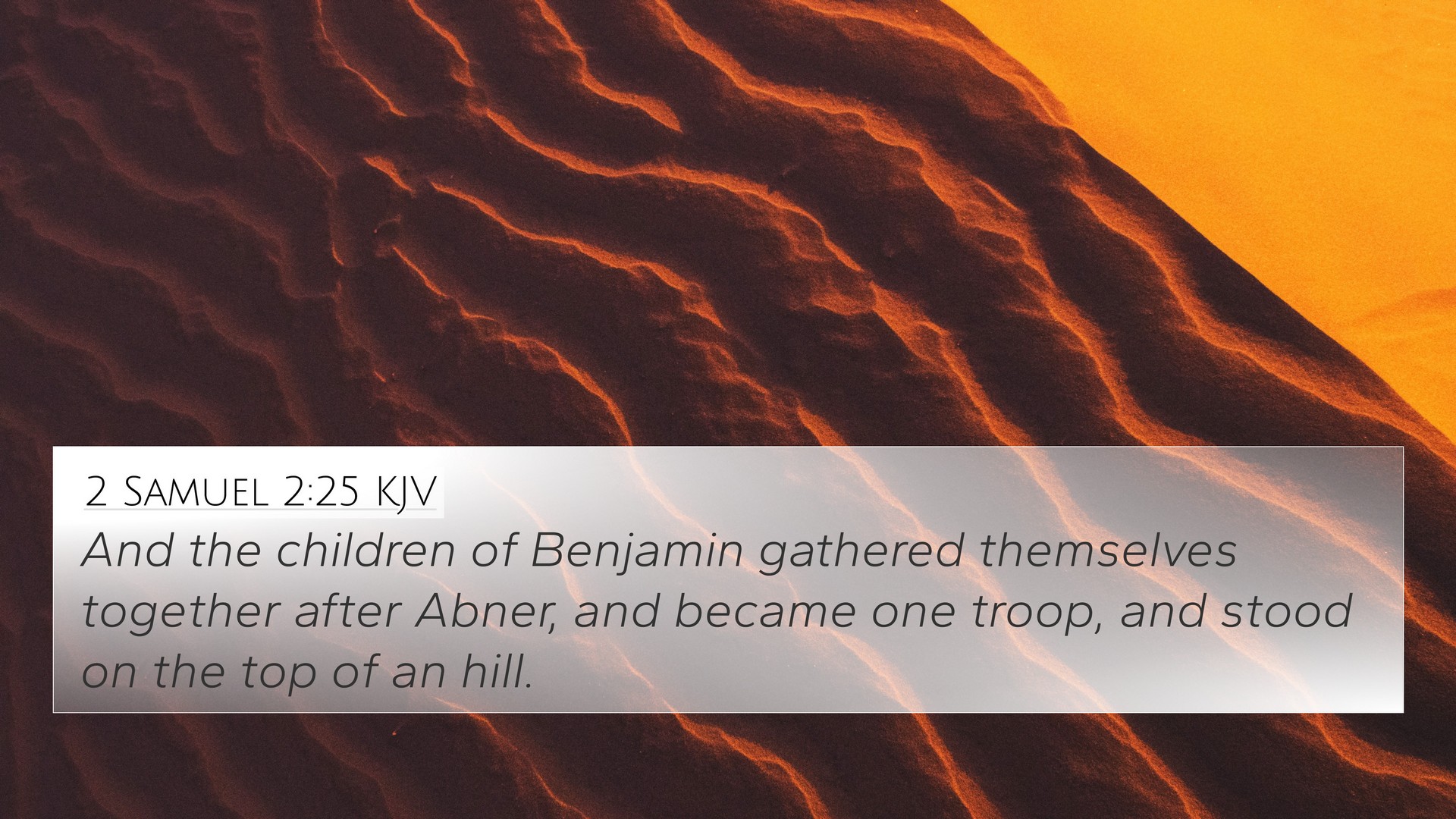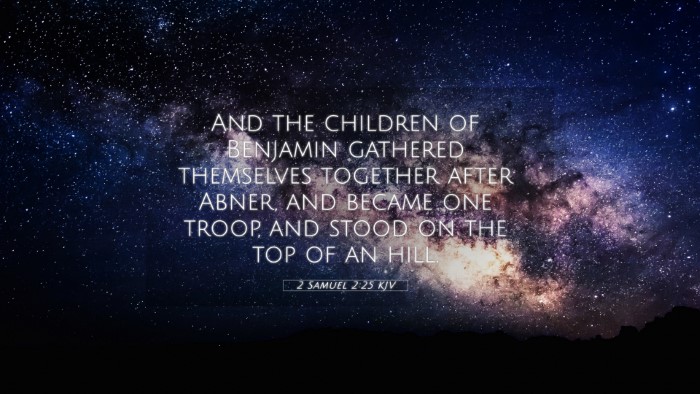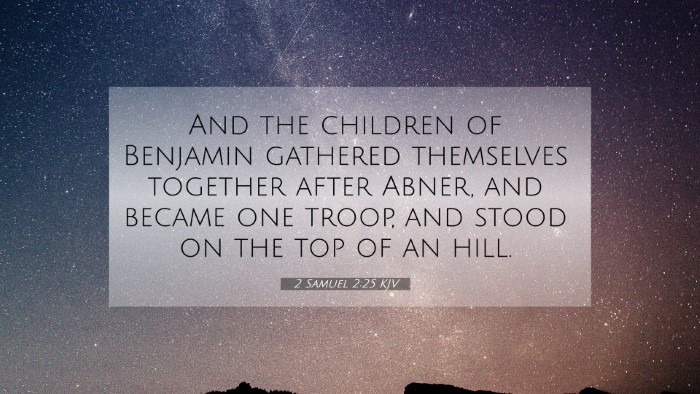Meaning of 2 Samuel 2:25
Verse: "And the children of Benjamin gathered themselves together after Abner, and became one troop, and stood on a hill." (2 Samuel 2:25)
Summary
This verse depicts a pivotal moment in the conflict following King Saul's death, showing the rallying of the Benjamite tribes around Abner, Saul's general. Here, it showcases themes of loyalty and unity amidst civil strife in Israel.
Insights from Commentaries
This verse can be analyzed with insights from notable public domain commentaries:
-
Matthew Henry:
Henry emphasizes the loyalty of the Benjamites to Abner despite the rising conflict after Saul's death. He highlights the importance of unity in this tribe's stands and how it represents a significant faction in the emerging political landscape of Israel.
-
Albert Barnes:
Barnes points out the strategic moves made by Abner to consolidate power. He notes that the gathering of the Benjamites illustrates their initial support for the house of Saul, demonstrating how tribal loyalties influenced the early monarchy in Israel.
-
Adam Clarke:
Clarke interprets the gathering of the Benjamites as a clear indication of their allegiance to their leader. He reflects on how familial and tribal solidarity often supersedes national or communal considerations, particularly in chaotic times.
Thematic Connections
This verse relates to broader themes and several other scriptures that highlight the dynamics of leadership, allegiance, and conflicts within Israel's history. Below are some pertinent cross-references:
- 1 Samuel 10:20-24: The selection of Saul shows the people's preference for a king.
- 2 Samuel 2:1-4: David's anointing highlights the contrasting leadership structures in Israel.
- 1 Kings 12:16: Reflects on the divisions within Israel post-Solomon's reign.
- Isaiah 9:6-7: Foretells the establishment of a kingdom that will face conflicts.
- Romans 12:4-5: New Testament parallels emphasizing unity in the body of Christ.
- Matthew 12:25: A warning about divided kingdoms and their inability to stand.
- 2 Samuel 3:1: Further describes the long struggle between the houses of Saul and David.
- Acts 1:14: The early church's unity in prayer parallels the loyalty seen in 2 Samuel.
Interpretation and Understanding
When interpreting 2 Samuel 2:25, it is vital to consider the underlying societal structures and personal loyalties that shaped the history of Israel. The gathering of the Benjamites around Abner signals a moment of tension and factionalism whose echoes can be seen across the biblical narrative.
Application for Study
For those studying the Bible, utilizing a Bible concordance or a Bible cross-reference guide can facilitate deeper understanding of how verses interlink—including the dynamics between various leaders and tribes. Employing cross-referencing Bible study methods can yield insights into how tribal affiliations and relationships influenced events and decisions in biblical history.
Conclusion
2 Samuel 2:25 stands as a noteworthy verse in understanding the complex relationships that characterized the early monarchy in Israel. By exploring cross-references and themes, readers can gain a richer insight into the Scriptures and their practical implications for faith and community today.


